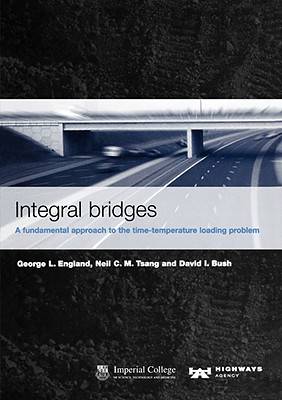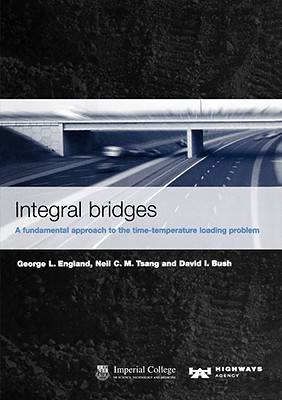
- Retrait gratuit dans votre magasin Club
- 7.000.000 titres dans notre catalogue
- Payer en toute sécurité
- Toujours un magasin près de chez vous
- Retrait gratuit dans votre magasin Club
- 7.000.0000 titres dans notre catalogue
- Payer en toute sécurité
- Toujours un magasin près de chez vous
Integral Bridges
A Fundamental Approach to the Time Temperature Loading Problem
George England, Neil Tsang, David BushDescription
In recent years, integral bridges have become increasingly popular in the UK. The Highways Agency standard now requires, where possible, that all new bridges with a length of less than sixty metres should be of integral form. In addition, it has been found that, due especially to the problems and costs associated with failed expansion joints, integral bridges are not only cost effective but also have a longer lifespan.
Integral Bridges was commissioned by the Highways Agency to produce guidance for bridge designers by addressing the thermally induced soil/structure interaction problem created by environmental changes of temperature and the associated cyclical displacements imposed on the granular backfill to the bridge abutments. It develops a better theoretical understanding of the cyclic performance, in particular the strain racheting in the backfill soil when in contact with a stiff structure. It also identifies the governing soil parameters and examines their influence in the interaction problem, develops numerical modelling procedures to predict interactive soil behaviour, and identifies and quantifies the controlling features of bridge structures relevant to the interaction problem.
Spécifications
Parties prenantes
- Auteur(s) :
- Editeur:
Contenu
- Nombre de pages :
- 176
- Langue:
- Anglais
Caractéristiques
- EAN:
- 9780727735416
- Date de parution :
- 18-02-00
- Format:
- Livre broché
- Format numérique:
- Trade paperback (VS)
- Dimensions :
- 210 mm x 297 mm
- Poids :
- 426 g

Les avis
Nous publions uniquement les avis qui respectent les conditions requises. Consultez nos conditions pour les avis.






